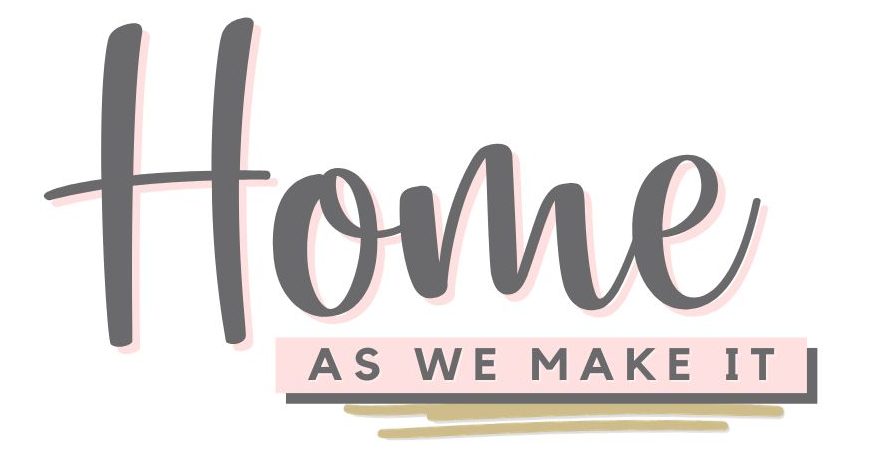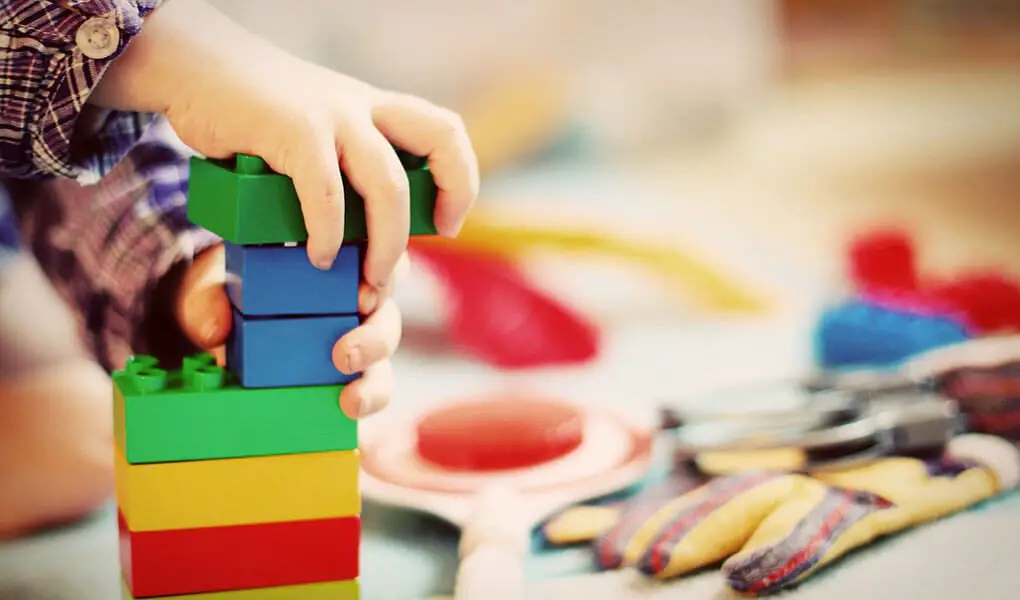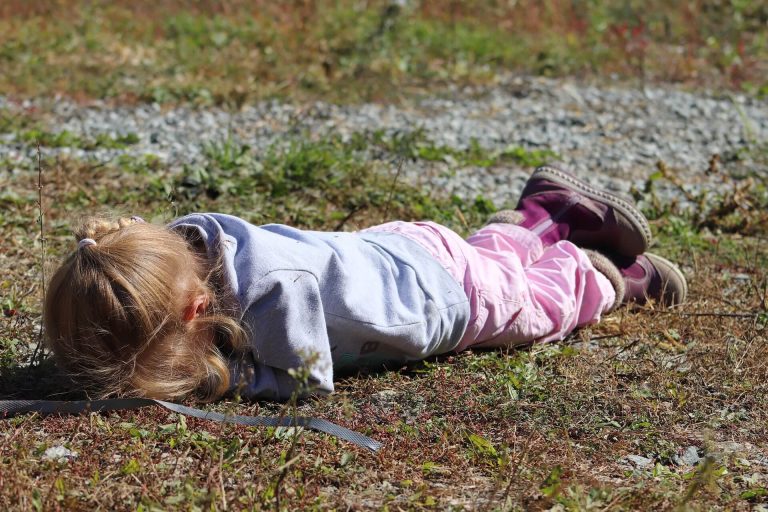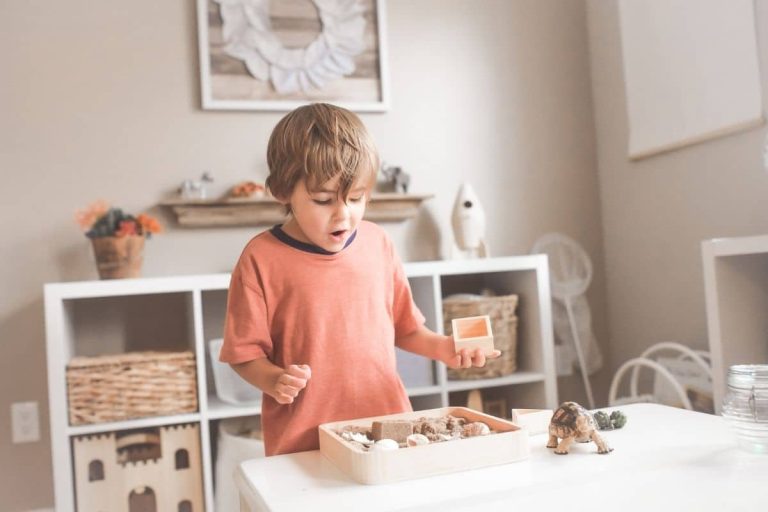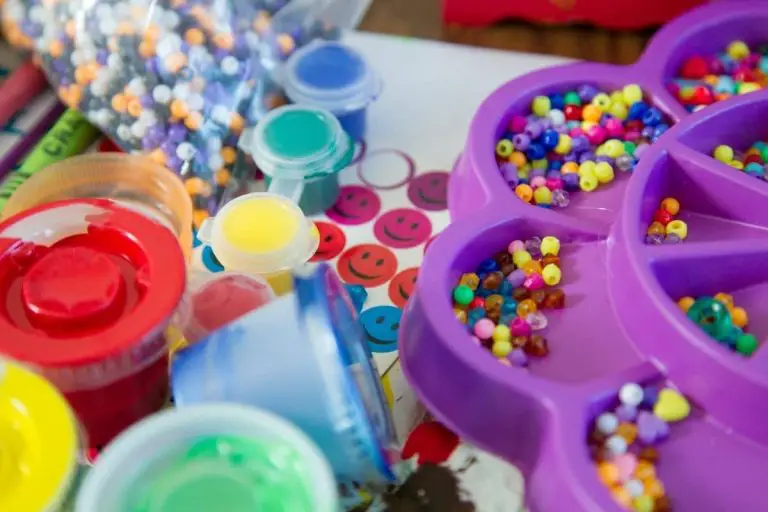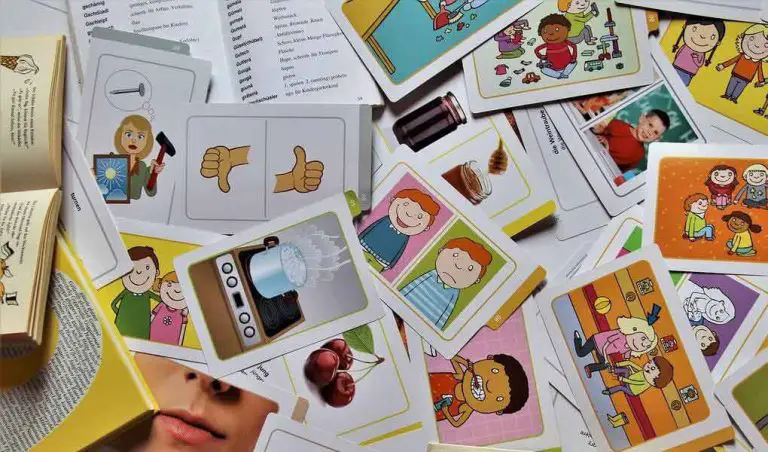How To Practice Montessori At Home In 6 Easy Steps
Have you considered applying the Montessori method with your children?
Nowadays, many parents want to practice Montessori in the hope to raise a confident and autonomous person. But quite often, as in our case, there may be no Montessori centers that your kid can visit.
Note: This post may contain affiliate links, which means if you buy from my link I might make a small commission. This does not affect the price you pay. See the full affiliate disclosure here.
Luckily, that’s not an issue. And I’m here to tell you how you can easily practice Montessori at home.
What is Montessori?
The Montessori method may be trending but it’s actually a well-forgotten old practice, developed by Maria Montessori. So old that the first Montessori establishment “Casa Dei Bambini” was opened in 1907.
A lot can be said about the method, but the easiest way to understand it is by knowing the several basic principles that separate Montessori from the common practice.
Montessori principles to keep in mind
- Respect the child. It may sound trivial today, but in the early 20th century, this was quite an extravagant idea. The Montessori method shows respect to the kids by allowing them to make reasonable choices and focus on their interests without interrupting their concentration.
- Learn through experience. The hands-on approach is the pillar of the Montessori method. The materials are specially designed so the kids can learn by touch, instead of just listening to the teacher.
- Mixed classrooms. Montessori establishments are commonly divided into 3-year groups, i.e. 3-6, 6-9. This practice promotes better social skills and less competitiveness in the classroom.
- Absorbent mind. What Maria Montessori calls the “Absorbent mind” stage, is actually the first 6 years of life. In this period, the child can easily absorb their environment and learn from it.
- Sensitive periods. According to the Montessori method, the sensitive periods mark time when the kids are prone to learn new skills easier. However, the tricky part is that they don’t occur in sequence or at the same age. Thus, it’s the teacher’s role to identify this sensitive period and encourage the child to practice the new skill.
- Importance of the environment. The environment plays a huge role in Montessori education. The classroom should be minimalistic, with neutral colors, natural materials, living plants, and less distractions. Also, all artworks should be on the kids’ eye-level, materials should be accessible by the kids without having to call a teacher, and there should be enough of space for the children to move around.
- Self-education. One of the most important concepts in the Montessori method is the belief that young kids can teach themselves. Simply put, if you put them in the right environment, with the right materials, motivate and guide them, they will be capable and willing to educate themselves.
How to practice Montessori at home
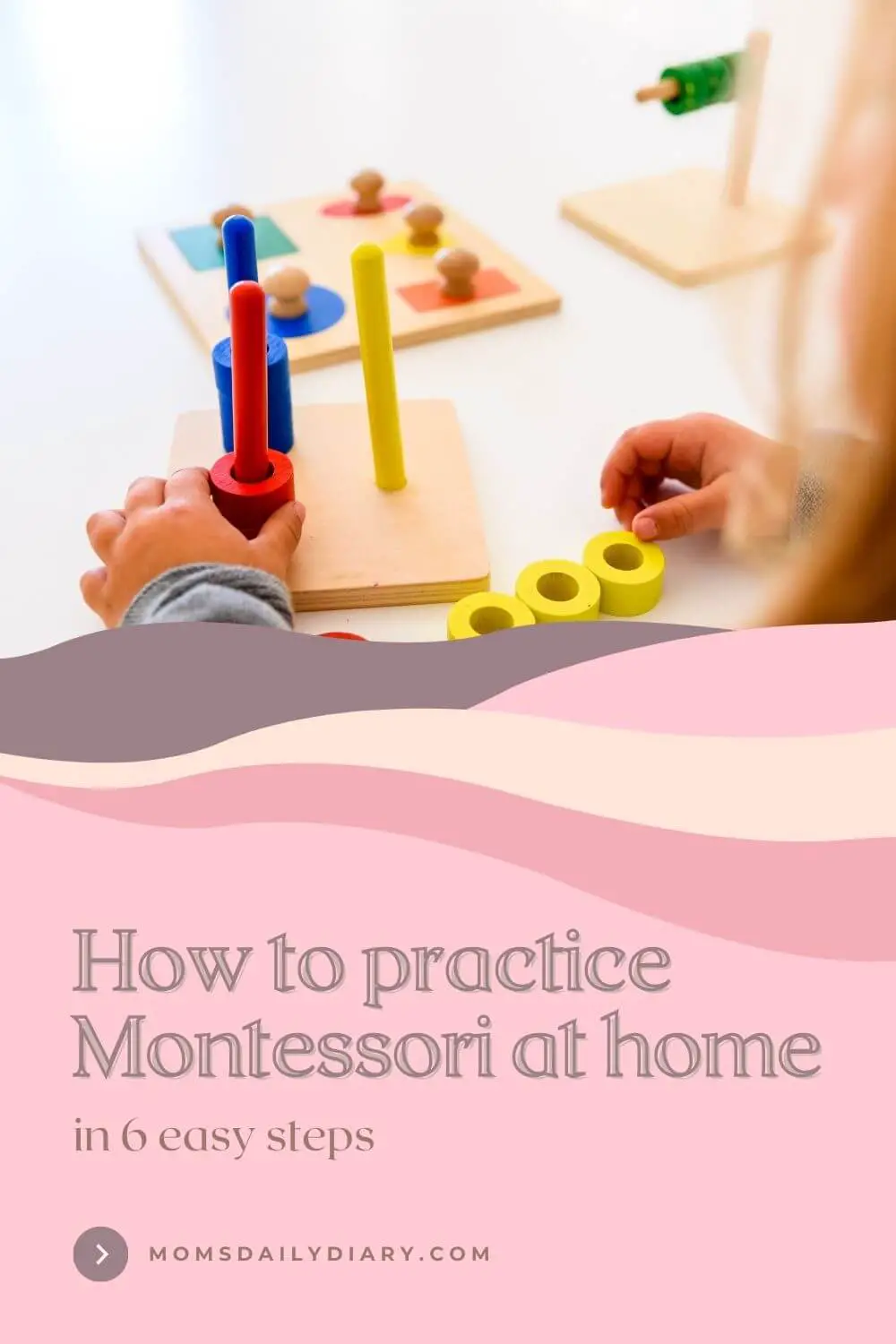
Practicing Montessori at home may sound overwhelming, but it actually comes pretty naturally.
So here is how to include it in your daily life without even noticing.
Step 1. Simplify their environment
As we already mentioned, the Montessori environment should be simple, convenient, and calming. This will help you avoid over-stimulating your little one and help them concentrate better on the task at hand.
Here are a few tips to start you out:
- Paint the bedroom/playroom in neutral colours. Use white or light natural colors for a calming effect.
- Put away most of the toys. This way you’ll avoid over-stimulation and clutter and will reduce distractions. You can also store them in boxes and rotate them. Or you can sort them out and have themed toy days, i.e. books on Mondays, building blogs on Tuesdays, musical toys on Wednesdays, arts on Saturday, etc.
- Leave enough open space. Montessori encourages activity in any form. So try to offer your kid as much space as possible so they are free to move around and unleash their imagination.
Step 2. Allow them easy access
If you want to practice Montessori at home you’ll need to provide your kids with easy access to the bathroom, bedroom, and playroom.
While you can work with what you already have, according to Montessori, kids’ furniture needs to be accessible, lightweight and made of natural materials.
Here is a quick list of the essentials you should consider.
- Floor bed. Probably the most associatable item in every Montessori bedroom is the floor bed. What does it have to do with Montessori? It encourages the toddler to go to bed and get up in the morning safely on their own.
- Kid level shelves. Following their own interest, the kids should be able to grab the materials of choice on their own and then put them back on their place. You can arrange this with a simple low open shelf or this awesome toy organizer.
- Step stool. Step stools allow your toddler to easily access the sink, toiler, kitchen counters, or anything else they need. When choosing the stool, make sure it is lightweight enough so the kid can carry them, and that it has non-slip feet (because if will often be used in the bathroom or around the sink).
- Bookshelf. The book shelf should also be on the child’s level so that they can grab whichever book they choose. If you’re going for the full Montessori experience, pick a simple bookshelf, made of natural materials.
- Clothing rack. If your kids is at the stage of learning to dress on their own, a minimalistic clothing rack can give them the option to pick their own clothes (from a selection you’ve made beforehand).
Still, Montessori furniture tends to be a bit pricey. So if you want to work with what you have, you can always clear a section with low shelves in your home and arrange their materials there.
Many parents also put the mattress directly on the floor, instead of in a wooden bed frame. And while I am not a fan of this particular practice, it is still an option if you want to apply Montessori at home on a budget.
Step 3. Teach them life skills
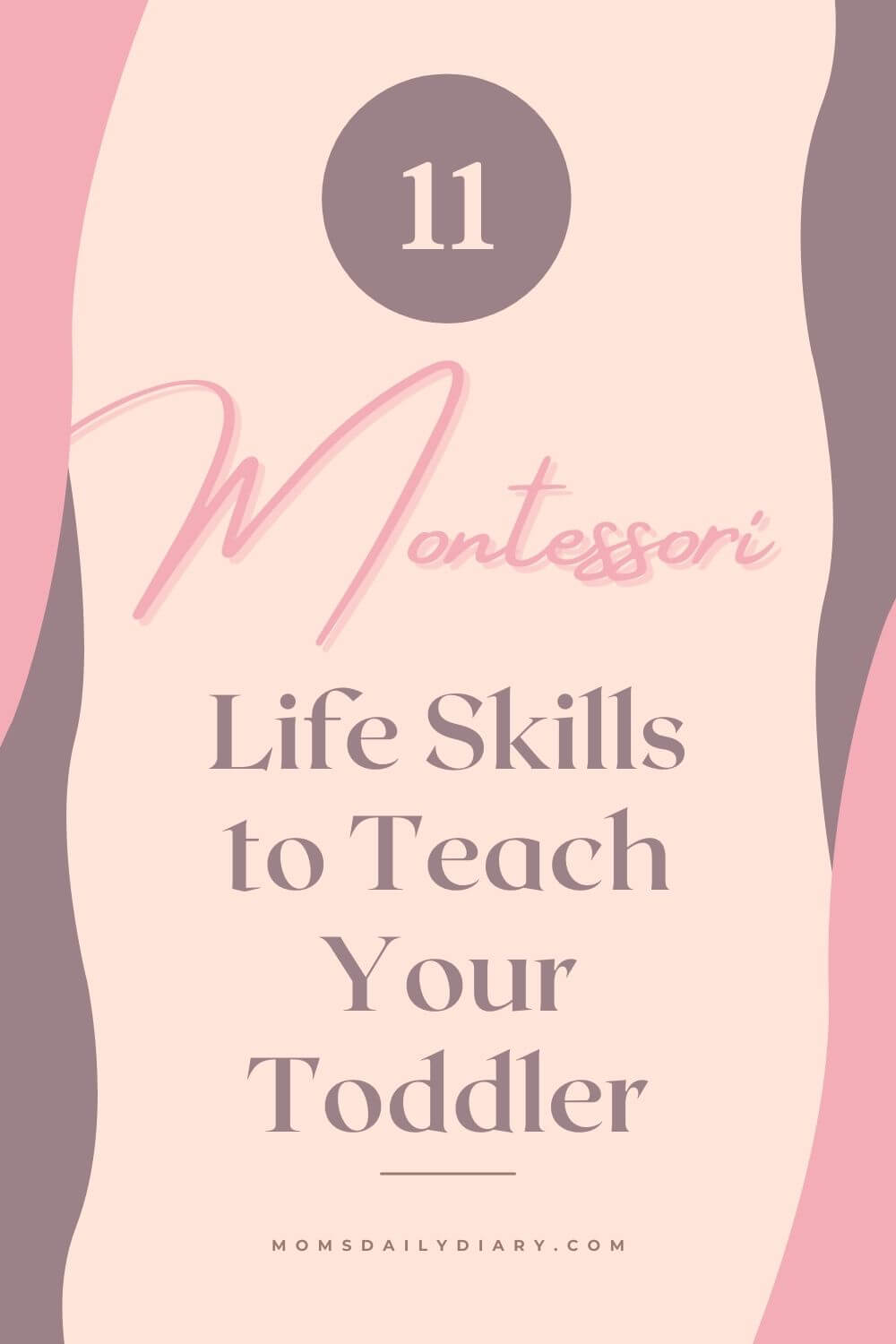
A big part of the Montessori teaching revolves around learning practical life skills like picking up toys or brushing teeth.
Doesn’t sound very sciency, I know.
But it will greatly boost your little one’s confidence, social and fine motor skills. And to put words into example, here is what you may want to teach your child:
Toddler skills (1-3 years old)
- Picking up their toys
- Putting books back on the shelf
- Helping to prepare snacks
- Helping to set up the table
- Choosing clothes to wear
- Throwing away their trash
- Feeding the pets
- Putting dirty clothes in the washer
- Folding washcloths
- Saying “Please” and “Thank you”
- Covering a cough
Preschooler skills (3-6 years old)
- All toddler skills
- Helping sweeping and vacuuming
- Helping with cooking
- Clearing the table
- Helping with the dishes
- Making their own bed
- Watering plants
- Sorting and folding clothes
- Basic care for animals
- Saying “Excuse me”
- Blowing their nose
Step 4. Encourage independence
Never help a child with a task at which he feels he can succeed.
Maria Montessori
Independence is among the key concepts in the Methods. So instead of doing something for them, just help them do it themselves.
The easiest way to guide them on their new independent path is by including them in your daily activities.
In a practical example, don’t clean the house while they are napping. Clean it in front of them, even with them. This way you’ll show them that the house doesn’t clean itself, that someone has to do it, and how it should be done.
And as a bonus, you’ll get naptime for some me-time.
Step 5. Practice concentration
Children cannot focus on a task as adults can. They get distracted pretty easily. That’s why you need to offer them a chance to practice their concentration without interruptions.
How to do that?
Identify what sparks the most interest in them, get them the right materials so they have everything they need, and provide them with a space where they can explore freely. It could be in the solitude of their room, or on the coffee table next to you.
Just see what works best for your child.
Step 6. Motivation instead of rewards
When practicing Montessori at home, it’s important to know that the method is not a supporter of rewarding the child for the job well done. At least not in the common sense of giving them stickers, sweets, or loud praises.
Instead, you need to motivate them to continue with their good work. Praise the value of their accomplishment. This will help the child feel proud of their work and take pleasure in doing it again.
Age-based Montessori
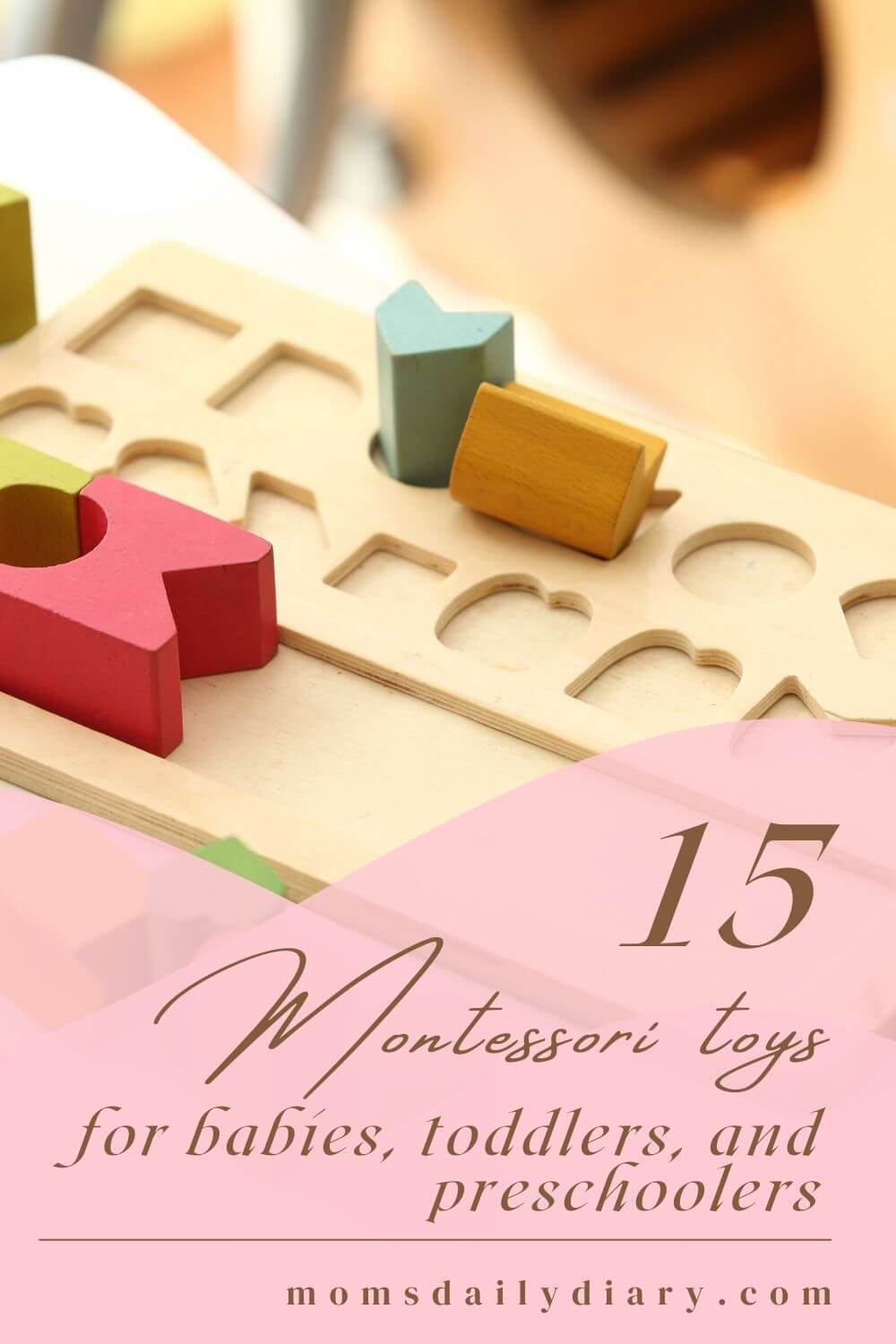
Having the right approach with your kid is 50% of the work. The other 50% come from introducing them to the right tools to spark their imagination, creativity, and will to learn.
While you can DIY some of the materials, I’ve collected for you a selection of developmental toys that you may need to apply Montessori at home. And if you think they may be out of your budget at least they’ll give you some ideas where to start.
Montessori toys for babies (0-12 months)
You may think that the Montessori method is too advanced for babies but believe me, it’s not. One of the signature Montessori toys, the Pikler triangle, is recommended for kids aged 8m+.
If you’re using a floor bed, you can encourage your baby to move from sleep to play on their own by keeping the age-appropriate toys on low shelves near their bed.
Here’s a sample list of Montessori toys for babies that you may want to avail:
- Ball cylinder. The wooden cylinder encourages your baby to crawl, while the sound of the balls keeps the baby engaged.
- Object permanence box. The child has to drop the ball into the hole. It teaches object permanence and promotes gross motor skills.
- Spinning rainbow. This colourful spinning drum is suitable for kids aged 6 to 12 months. It promotes eye hand coordination, while the easy movement helps them develop their wrist and arm muscles.
- Baby gym. Montessori baby gyms can be easily recognized by their simple frame made of natural materials and minimalistic-looking toys.
- Crib mobile. Have you seen the baby mobile meme? WIth a Montessori mobile your baby won’t have to look at animal bottoms while lying in their crib. They are commonly made out of wooden shapes or soft high-contrast toys.
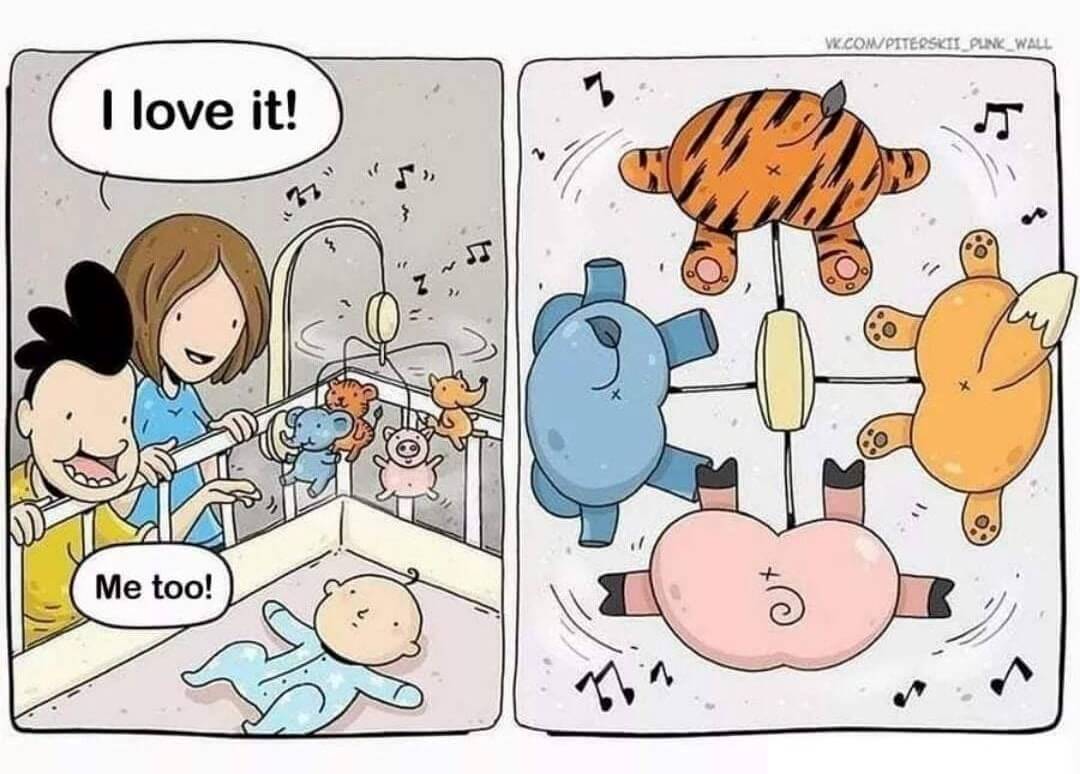
Montessori toys for toddlers (1-3 years)
Think about Montessori toys and you probably get mostly toddler toys in mind. That is because the method shows great results in toddlers’ development.
So aside from displaying the books and placing some artwork at the toddler’s eye level, here’s a list of engaging developmental toys you may want to get.
- Sensory bin tools. To be honest, you can make sensory bins out of any tray and bowls. But having a wooden set designed specifically to aid your little one’s fine motor development takes the fun of it at a whole new level.
- Wooden puzzles. The wooden puzzles for toddlers are thick enough so that the kid can easily pick them up and place them at the right spot. And to attract their attention even more, they are available in cute animal forms as well.
- Balance board. These boards are recommended for kids aged 18m+. They can be used as a rocker, tunnel, slide, blidge, lounge chair and so much more. But most of all, they stimulate the toddler’s vestibular system and sense of balance.
- Stacking toys. Stacking blocks is a great way to stimulate your child’s mind and logical thinking. As a bonus, you can pick a toy that also includes learning shapes, sorting and colours.
- Flashcards. Now this is something you can easily do at home. All you need is a nice printer. Still, if you don’t have the time or materials, this is a great starting pack to introduce flashcards to your toddler.
Montessori toys for preschoolers (3-6)
When you practice Montessori at home, your preschooler will be most engaged with learning important life skills. And the toys below can give you ideas on how to turn learning into a game.
- Advanced stacking blocks. Toddlers love to stack blocks. But if you have a preschooler you can take things up a notch with these wooden balancing stones. They promote logical and creative thinking, as well as fine motor and sorting skills.
- Learning time. Preschool is the time to teach your kid about the clock and the calendar. Do it in a fun and engaging way with a cognitive board for a hands-on approach.
- Busy boards. Busy boards are a great way to teach your kids some valuable life skills. Time to learn self-dressing? This portable busy board will be really helpful.
- Peg board. Can your kid count to 10? This pegboard numbers puzzle can turn the boring counting into hours of fun. Plus it has a fishing pole and clips for advanced fine motor development.
- Busy book. Need a couple of quiet hours? Then this busy book is exactly what you need to keep them entertained on the dining table for quite a while.
Conclusion
So what do you think? It does sound overwhelming at first but when you think about it, all you need is the right mindset and some creativity.
If you still need help getting your head around it, I’ve made a Pinterest board with actual examples of how to practice Montessori at home.
Now tell me, what is your kid’s favorite Montessori activity?
